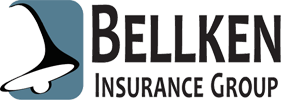Commercial Property Insurance in Florida: 5 Coverage Gaps That Can Bankrupt a Business
See How We're Different
or call us: 954-233-0733
In the vibrant and dynamic business landscape of Florida, commercial property insurance serves as a crucial safety net for businesses of all sizes. However, many business owners may not fully understand the intricacies of their policies, leading to potential gaps in coverage that could have dire financial consequences. This article explores five critical coverage gaps in commercial property insurance that could ultimately jeopardize a business's financial stability.
Understanding Commercial Property Insurance
Commercial property insurance is designed to protect businesses from financial losses due to damage to their physical assets. This includes buildings, equipment, inventory, and other property essential for operations. In Florida, where natural disasters such as hurricanes and flooding are common, having comprehensive coverage is not just advisable; it’s essential. The unpredictable nature of the weather in this region means that businesses must be proactive in safeguarding their investments, as the cost of recovery after a disaster can be staggering. Without adequate insurance, a single catastrophic event could jeopardize the future of a business, leading to long-term financial instability.
Types of Coverage
There are various types of coverage included in commercial property insurance policies. These typically encompass:
- Building Coverage: Protects the physical structure of the business premises.
- Contents Coverage: Covers the business's inventory, equipment, and furnishings.
- Business Interruption Insurance: Compensates for lost income during a period when the business cannot operate due to a covered event.
Understanding these types of coverage is the first step in identifying potential gaps that could leave a business vulnerable. For instance, while a business may have building coverage, it’s crucial to assess whether the policy includes protection against specific risks such as flood or wind damage, which are particularly pertinent in Florida. Additionally, businesses should consider the value of their contents and whether they have adequate coverage to replace them in the event of a loss. Regularly reviewing and updating these policies ensures that businesses remain protected as they grow and evolve.
The Importance of Tailoring Coverage
Every business is unique, and so are its insurance needs. Tailoring coverage to fit specific operational risks is crucial. A one-size-fits-all policy may not adequately protect against the unique challenges faced by different industries, particularly in a state like Florida, where environmental factors play a significant role in risk assessment. For example, a restaurant may require additional coverage for food spoilage due to power outages, while a retail store might need enhanced protection for seasonal inventory fluctuations. Moreover, businesses in certain sectors may also face specific liability risks that necessitate additional endorsements or riders to their policies, ensuring they are fully covered against potential lawsuits or claims.
Furthermore, businesses should engage with insurance professionals who understand the local market and can provide insights into the most relevant risks. This collaboration can lead to more informed decisions about coverage limits, deductibles, and exclusions. By actively participating in the insurance selection process, business owners can better align their policies with their operational realities, ultimately leading to a more resilient business model that can withstand unforeseen challenges.
Gap #1: Natural Disaster Exclusions
Florida is notorious for its hurricanes, tropical storms, and flooding. While many commercial property insurance policies offer some level of protection against these natural disasters, exclusions can leave businesses exposed to significant financial losses.
Understanding Exclusions
Many policies may exclude certain types of damage related to natural disasters, particularly flooding. For instance, a business located in a flood-prone area may assume that their commercial property insurance covers all potential damages, only to find out that flooding is excluded. This can lead to devastating financial consequences if a disaster strikes. Furthermore, even if a business is covered for wind damage from hurricanes, the costs associated with business interruption or loss of inventory due to flooding may not be included in the standard policy. This lack of comprehensive coverage can create a false sense of security, leaving business owners unprepared for the reality of their situation.
Flood Insurance: A Necessity
Given the high risk of flooding in Florida, obtaining a separate flood insurance policy is often a necessity. The National Flood Insurance Program (NFIP) offers coverage specifically for flood-related damages, which can be a lifesaver for businesses located in vulnerable areas. Without this additional coverage, businesses could face bankruptcy in the wake of a flood. Moreover, understanding the specifics of flood insurance is crucial; policies can vary widely in terms of coverage limits and deductibles. Business owners should also be aware of the waiting periods that often accompany flood insurance policies, which can delay coverage when a storm is imminent. This highlights the importance of proactive planning and risk assessment, ensuring that businesses are not only compliant with insurance requirements but also adequately protected against the unpredictable nature of Florida's weather patterns.
Gap #2: Inadequate Business Interruption Coverage
Business interruption insurance is designed to cover lost income during periods when a business cannot operate due to a covered event. However, many business owners underestimate the importance of this coverage or fail to assess their needs accurately. The reality is that a sudden disruption, whether from a natural disaster, fire, or even a global pandemic, can halt operations and lead to significant financial losses. Without adequate coverage, businesses may struggle to recover, facing not only the immediate costs of repairs or recovery but also the long-term implications of lost revenue.
Calculating Adequate Coverage
To ensure that business interruption coverage is adequate, owners should calculate potential losses based on the business's revenue and operating expenses. This includes considering factors like the time it may take to resume operations after a disaster. Underestimating these figures can lead to insufficient coverage, leaving businesses vulnerable to financial strain. It is advisable for business owners to conduct a thorough analysis of their cash flow, fixed costs, and any other financial commitments that may persist during a shutdown. Additionally, consulting with an insurance professional can provide insights into industry benchmarks and help tailor coverage to unique business circumstances.
Common Misconceptions
Many business owners mistakenly believe that their standard property insurance will cover all losses related to business interruptions. This misconception can lead to a rude awakening when disaster strikes. It’s critical to understand that business interruption coverage is a separate entity that needs to be carefully evaluated and tailored to meet specific business needs. Furthermore, some may think that only large corporations need this type of insurance, overlooking the fact that small and medium-sized enterprises are equally at risk. In fact, smaller businesses often have tighter cash flow margins, making them more susceptible to the financial fallout from unexpected interruptions. Understanding the nuances of business interruption insurance can empower owners to make informed decisions that safeguard their livelihoods and ensure long-term sustainability.
Gap #3: Equipment Breakdown Coverage
Equipment breakdown coverage is often overlooked, yet it can be a critical component of commercial property insurance. This coverage protects against the costs associated with the failure of essential equipment, which can lead to significant operational disruptions. In today's fast-paced business environment, where downtime can translate directly to lost customers and revenue, having this coverage is not just a safety net but a strategic necessity.
The Cost of Equipment Failure
In many industries, equipment failure can halt operations entirely, leading to lost revenue and increased expenses. For instance, a manufacturing facility may rely on machinery that, if broken, could lead to production delays and costly repairs. Without adequate equipment breakdown coverage, businesses may find themselves facing crippling financial burdens. Additionally, the ripple effect of equipment failure can extend beyond immediate repair costs; it can also impact supply chain relationships, customer satisfaction, and overall market competitiveness. The longer the equipment remains out of service, the more pronounced these effects become, potentially leading to a loss of market share.
Assessing Equipment Needs
Business owners should conduct a thorough assessment of their equipment and machinery to determine the potential risks and costs associated with breakdowns. This proactive approach can help identify the need for additional coverage and ensure that the business is protected against unforeseen equipment failures. Furthermore, understanding the age, maintenance history, and operational demands of each piece of equipment can provide insights into which items are most vulnerable to breakdowns. Regular maintenance schedules and investing in upgrades can also mitigate risks, making it essential for business owners to stay informed about the latest advancements in technology that could enhance equipment reliability and efficiency.
Moreover, engaging with insurance professionals to review existing policies and coverage limits can uncover gaps that may not be immediately apparent. Many businesses may not realize that certain types of equipment, such as specialized tools or high-tech machinery, may require tailored coverage options. By collaborating with insurance experts, companies can develop a comprehensive risk management strategy that not only addresses equipment breakdown but also aligns with their long-term operational goals. This holistic approach ensures that businesses are not just reactive to equipment failures, but are strategically positioned to thrive in an unpredictable environment.
Gap #4: Lack of Coverage for Tenant Improvements
For businesses that lease their space, tenant improvements can represent a significant investment. However, many commercial property insurance policies do not cover these enhancements, leaving tenants vulnerable to financial losses.
Understanding Tenant Improvements
Tenant improvements refer to modifications made to a leased space to suit the specific needs of a business. This can include renovations, custom installations, and other enhancements. If a disaster occurs and these improvements are damaged, the costs to repair or replace them may not be covered under standard property insurance. These enhancements can vary widely depending on the nature of the business; for instance, a restaurant may require specialized kitchen equipment and seating arrangements, while a tech startup might invest in open office layouts and high-tech conference rooms. The investment in these improvements is not merely aesthetic but is often essential for operational efficiency and customer experience.
Negotiating Lease Terms
To mitigate this risk, businesses should negotiate lease terms that include provisions for tenant improvements. Additionally, obtaining additional coverage specifically for these enhancements can provide peace of mind and financial protection against potential losses. It is crucial to document all improvements made and their associated costs, as this can aid in negotiations with landlords and insurance providers. Furthermore, businesses should consider consulting with legal and insurance professionals to ensure that their lease agreements comprehensively address tenant improvements and that they are adequately covered in the event of unforeseen circumstances. Understanding the nuances of these agreements can empower tenants to make informed decisions that protect their investments and support their operational goals.
The Importance of Insurance Review
Regularly reviewing insurance policies is another vital step for businesses to ensure they are adequately protected. As tenant improvements evolve and expand, so too should the insurance coverage. Many businesses overlook the necessity of updating their policies to reflect new enhancements or changes in the leased space. This proactive approach not only helps in maintaining comprehensive coverage but also ensures that any future improvements are considered in the policy, thus safeguarding the business's financial interests. Additionally, engaging with insurance agents who specialize in commercial policies can provide insights into tailored coverage options that specifically address tenant improvements, ensuring that businesses are not left exposed in the event of a loss.
Gap #5: Insufficient Liability Coverage
While commercial property insurance primarily focuses on property damage, liability coverage is equally important. Insufficient liability coverage can expose a business to significant financial risks, especially in a litigious environment.
The Importance of Liability Coverage
Liability coverage protects businesses from claims arising from injuries or damages that occur on their premises. In Florida, where tourism and foot traffic are high, the risk of accidents increases. Without adequate liability coverage, a single claim could lead to substantial legal fees and settlements, potentially bankrupting a business. Moreover, the presence of high-profile events and gatherings in the state can amplify these risks, as larger crowds often lead to a greater chance of incidents occurring. Businesses must be proactive in understanding the implications of liability coverage, as the costs associated with a lawsuit can far exceed the price of maintaining sufficient insurance.
Evaluating Liability Needs
Business owners should regularly evaluate their liability coverage needs based on factors such as the nature of their operations, the volume of customers, and the specific risks associated with their industry. This evaluation can help ensure that businesses are adequately protected against potential claims. Additionally, it is wise to consider the evolving landscape of liability laws and regulations, which can change frequently and impact coverage requirements. Engaging with an insurance professional who specializes in commercial liability can provide valuable insights into the necessary coverage limits and endorsements that may be beneficial, such as product liability or professional liability, depending on the nature of the business. By taking a comprehensive approach to liability coverage, businesses can safeguard their assets and maintain their reputation in an increasingly competitive market.
Conclusion: Protecting Your Business from Coverage Gaps
In the ever-evolving landscape of Florida's business environment, understanding and addressing coverage gaps in commercial property insurance is crucial. By recognizing the potential risks associated with natural disasters, business interruptions, equipment failures, tenant improvements, and liability claims, business owners can take proactive steps to safeguard their financial future.
Consulting with an experienced insurance professional can provide valuable insights into tailoring coverage to meet specific business needs. By ensuring comprehensive protection, businesses can thrive in Florida's dynamic marketplace without the looming threat of financial ruin due to coverage gaps.
Ultimately, investing time and resources into understanding commercial property insurance can make the difference between a thriving business and one that struggles to survive in the face of adversity.








